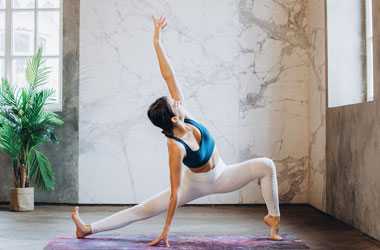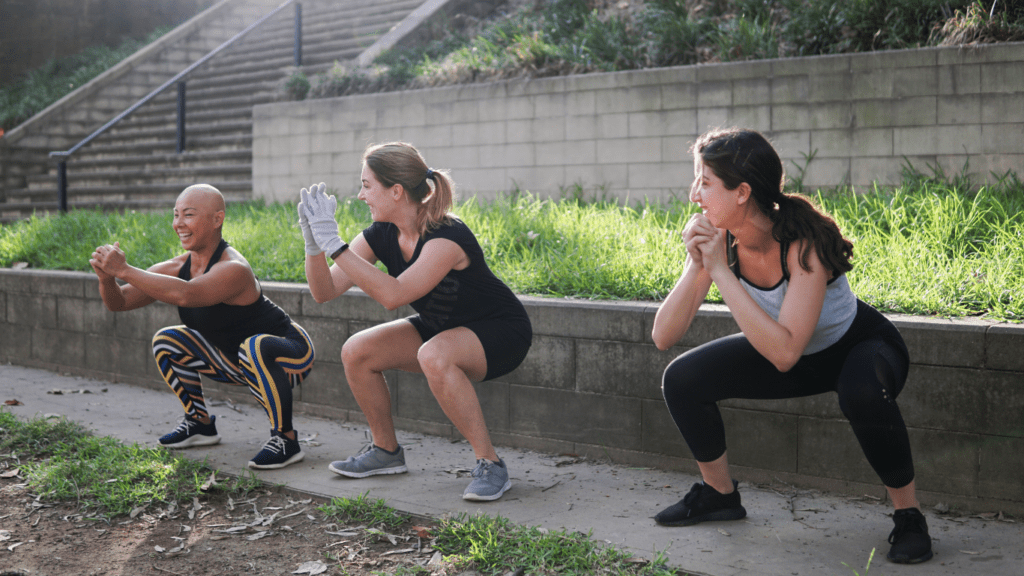Flexibility plays a crucial role in achieving optimal fitness levels. When I think about flexibility, I envision a key component that often gets overlooked in fitness routines. It’s not just about being able to touch your toes; it’s about enhancing performance, preventing injuries, and improving overall well-being.
In my experience as a fitness enthusiast, I’ve come to appreciate the significant impact that flexibility exercises can have on one’s physical health. As I delve into the importance of flexibility in overall fitness, I aim to shed light on how incorporating stretching and mobility work can elevate your workout regimen.
Flexibility is not just for yogis or dancers; it’s for anyone looking to enhance their athletic abilities and maintain a healthy body. Join me on this exploration of how flexibility contributes to a well-rounded and sustainable approach to fitness.
Understanding Flexibility
Flexibility plays a crucial role in overall fitness. It is not just about touching your toes; it’s about enhancing performance, preventing injuries, and improving well-being. As a fitness enthusiast, I can attest to the benefits of including stretching and mobility exercises in your routine.
Recognizing the importance of flexibility for everyone, not just particular groups like yogis or dancers, is key to a comprehensive fitness approach.
Importance of Flexibility in Fitness
Flexibility plays a crucial role in overall fitness as it directly impacts various aspects of physical performance and well-being. Incorporating flexibility training into your routine can lead to significant benefits.
Let’s delve into how flexibility contributes to enhancing performance and preventing injuries.
Enhancing Performance
Being flexible allows me to move more freely and efficiently during workouts and everyday activities. It enables a full range of motion in joints, which is essential for proper execution of exercises.
Improved flexibility means better form, increased strength gains, and enhanced athletic performance. Flexibility positively influences agility, balance, and coordination, making movements more fluid and controlled.
Preventing Injuries
Flexibility training has been instrumental in reducing my risk of injuries during exercise. By increasing the flexibility of muscles and tendons, I’ve experienced fewer strains and sprains.
Maintaining good flexibility ensures that muscles can lengthen and contract effectively, reducing the chances of overstretching or tearing tissues. Improved flexibility also helps in correcting muscle imbalances and postural issues that can lead to injuries.
Flexibility Testing and Measurements
When it comes to assessing flexibility, there are various methods to gauge one’s range of motion and overall flexibility levels effectively. As a fitness enthusiast, I rely on specific tests and measurements to track my progress and ensure that I maintain optimal flexibility for my fitness goals.
Flexibility Tests:
- Sit and Reach Test: This classic flexibility test involves sitting on the floor with legs extended and reaching towards the toes to measure the flexibility of the lower back and hamstrings.
- Shoulder Flexibility Test: By evaluating the range of motion in the shoulder joints, this test assesses the flexibility of the upper body and shoulders, essential for various exercises and movements.
- Hip Flexor Test: Testing the flexibility of the hip flexors is crucial for proper posture and lower body movements, such as squats and lunges.
- Spinal Rotation Test: This test measures the rotation ability of the spine, which is vital for activities that require twisting motions like golf swings or yoga poses.
- Hamstring Flexibility Test: Focusing on the flexibility of the hamstrings, this test helps in assessing the ability to bend at the hips and knees effectively.
- Range of Motion (ROM): ROM measurements quantify the degree of movement around a specific joint or body part, providing valuable insights into flexibility levels.
- Goniometer Measurements: Using a goniometer, precise measurements of joint angles can be obtained, allowing for accurate assessment of flexibility improvements over time.
- Flexibility Scales: Various flexibility scales exist to rate flexibility levels, offering a structured way to monitor progress and set achievable flexibility goals.
- Flexibility Index: Calculating a flexibility index based on different flexibility measurements provides a comprehensive overview of overall flexibility and highlights areas that may require more attention.
By incorporating these flexibility tests and measurements into your fitness routine, you can effectively track your flexibility progress, identify areas for improvement, and tailor your training to enhance overall flexibility levels. Remember, maintaining optimal flexibility is key to achieving peak performance, preventing injuries, and enhancing your overall well-being.
Incorporating Flexibility Training in Fitness Routines
Expanding on the significance of incorporating flexibility training into fitness routines, I’ll delve into specific strategies that can enhance overall fitness levels.
- Diversifying Stretching Techniques: Exploring a variety of stretching techniques, such as static, dynamic, and ballistic stretching, can increase flexibility across different muscle groups. By alternating between these methods, individuals can improve muscle elasticity and range of motion.
- Integration of Yoga or Pilates Classes: Adding yoga or Pilates classes to a workout routine can promote flexibility, balance, and core strength. The fluid movements and poses in these practices help lengthen muscles and improve joint flexibility.
- Foam Rolling and Self-Myofascial Release: Incorporating foam rolling and self-myofascial release techniques before or after workouts can aid in muscle recovery and increase flexibility. These methods target trigger points and knots, enhancing muscle pliability.
- Prioritizing Warm-Up and Cool-Down Exercises: Implementing a comprehensive warm-up and cool-down routine that includes dynamic stretches and mobility exercises prepares the body for intense workouts and helps prevent muscle stiffness post-exercise.
- Regular Flexibility Assessments: Conducting periodic flexibility assessments using tests like the Sit and Reach Test or Shoulder Flexibility Test can track progress and identify areas needing improvement. Adapting workouts based on these assessments ensures targeted flexibility enhancement.
By integrating these strategies into fitness routines, individuals can optimize their flexibility levels, improve performance, and reduce the risk of injuries. Flexibility training is a key component of overall fitness that should not be overlooked.

















































































































































































































































































































































































































































































































































































































































 Founder
Damond Boucherley is the visionary founder of Aura Nature Spark, dedicated to promoting well-being through holistic practices. With a passion for nutrition, exercise, and mindfulness, Damond brings years of experience in health and wellness to the forefront of the organization. He believes in the transformative power of nature and is committed to providing valuable insights and resources that inspire individuals to live their best lives. Under his leadership, Aura Nature Spark continues to grow as a trusted source for health enthusiasts seeking balance and vitality.
Founder
Damond Boucherley is the visionary founder of Aura Nature Spark, dedicated to promoting well-being through holistic practices. With a passion for nutrition, exercise, and mindfulness, Damond brings years of experience in health and wellness to the forefront of the organization. He believes in the transformative power of nature and is committed to providing valuable insights and resources that inspire individuals to live their best lives. Under his leadership, Aura Nature Spark continues to grow as a trusted source for health enthusiasts seeking balance and vitality.
